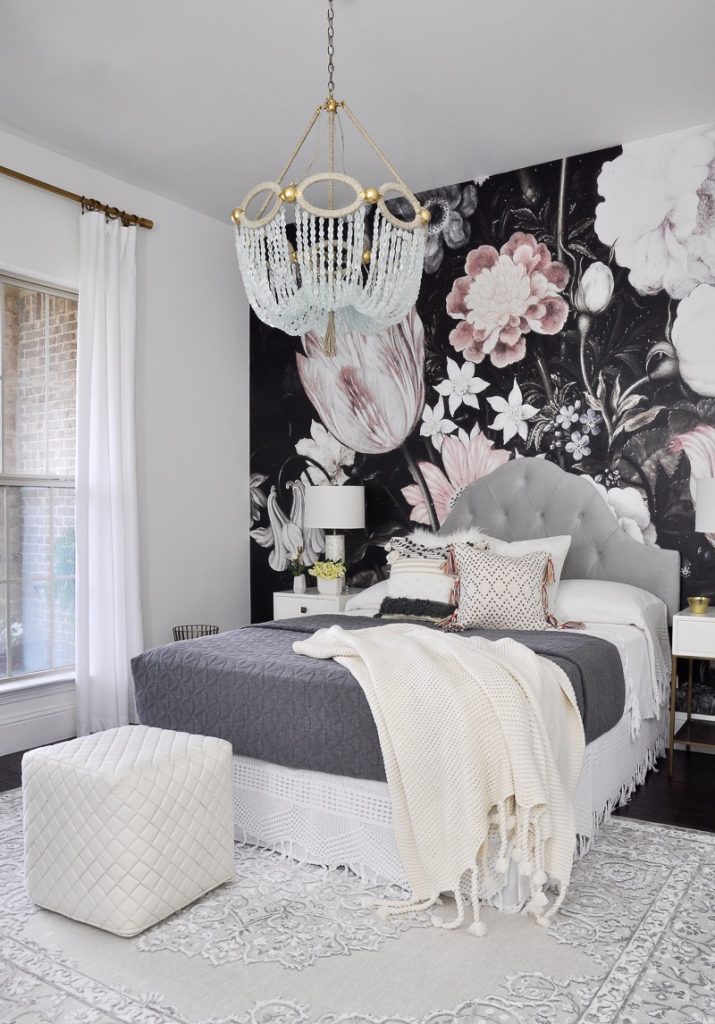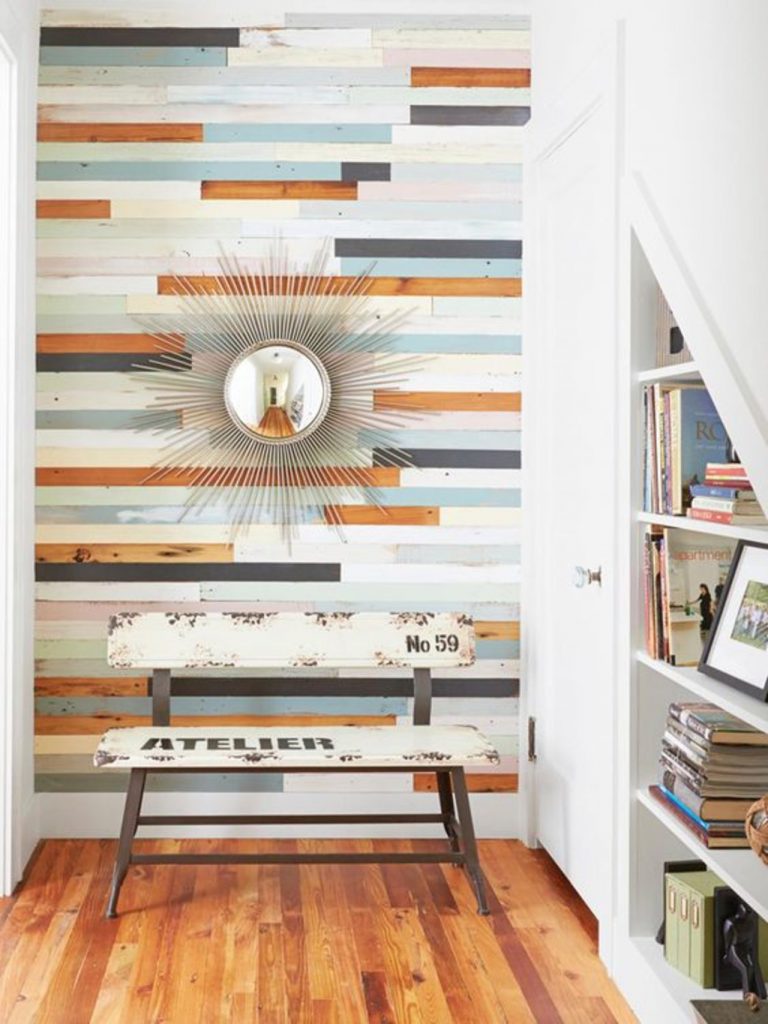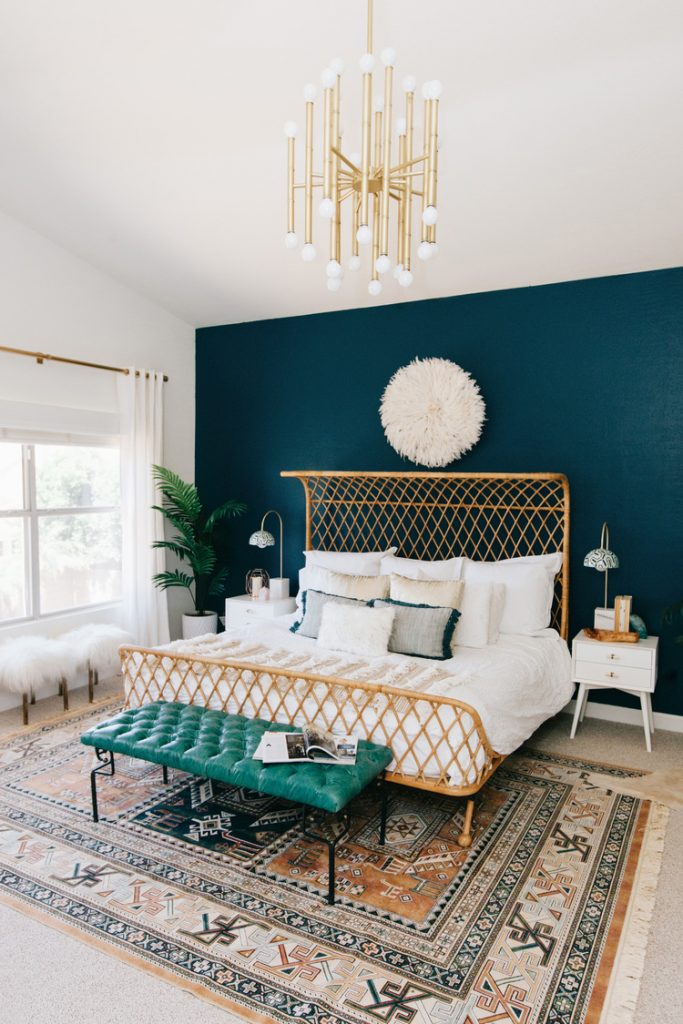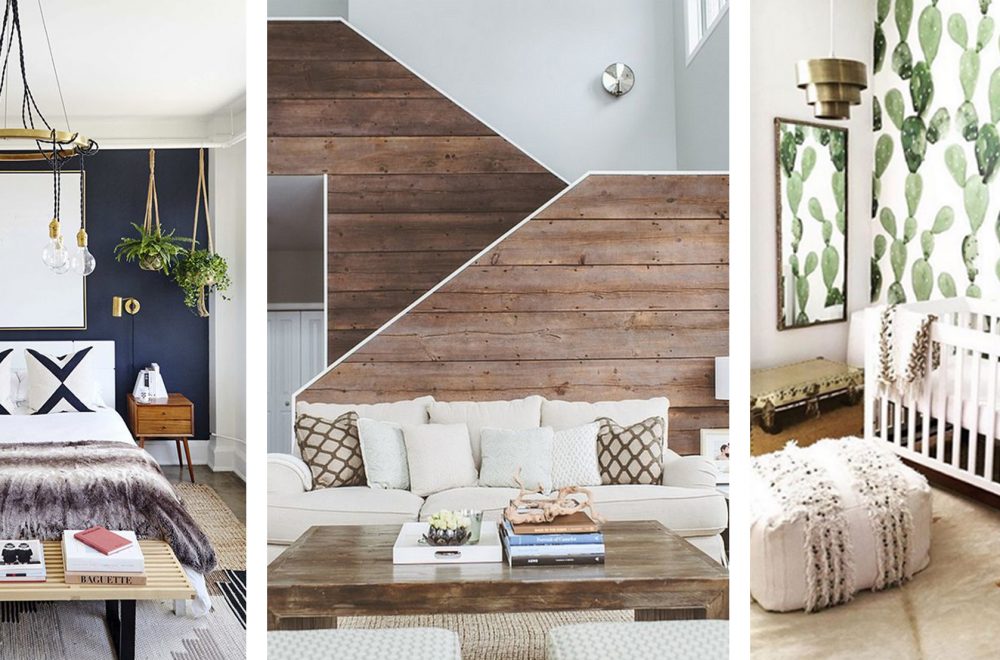[From left to right: Photo via My Domaine, photo via Interior Design Article, photo via Allison Smoley (also here)]
We’ve all seen the Pinterest posts that stop us dead in our tracks – the most perfectly painted accent wall. A rustic reclaimed wood wall behind a headboard. A dramatic wallpapered wall in a dining room. Totally aspirational and unachievable for the mere mortal, right? Not so, dear friend. Follow our tried and true tips below for achieving accent wall nirvana.
How to choose your location

Photo by Decor Gold Designs
Accent walls naturally attract the eye in a space, so think about the flow, purpose, and architectural structure of the space. Is the room long and narrow with a fireplace centered on the far wall? Do you have your headboard against a wall that features a tall vaulted ceiling? Spots like these are all great candidates for highlighting with an accent wall. Think about where you want the focal point to be in the room and also if there are any furniture pieces that you’d like to pop with a dramatic background.
How to choose your medium

Photo by HGTV.com
The easiest way to create an accent wall is to paint it — it’s minimal effort and can easily be changed out at a later time. Paint is a great option for when you just need that injection of color to add a little depth. Wallpaper is a little more effort, but well worth it for the right pattern — a bold pattern can create a dramatic look or a more subtle one can simply add some texture. With removable options available as well, it’s easier than ever to give wallpaper a shot! Other options for creating an accent wall include reclaimed wood panelling (also available in removable options!), shiplap, or adding trim to create a dimensional accent.
How to choose your color

Photo by Ave Styles
A dramatic color is great for a smaller accent wall or when paired with an overall lighter palette, so the dramatic color doesn’t feel too overwhelming. When creating a larger accent wall or if you’re adding an accent through dimensional trim, a more subtle hue would be preferable.
Ready to make your accent wall dreams come true but don’t know where to start? Chat with a designer for free today for some expert advice on how to add a designer-approved accent wall to your space!

